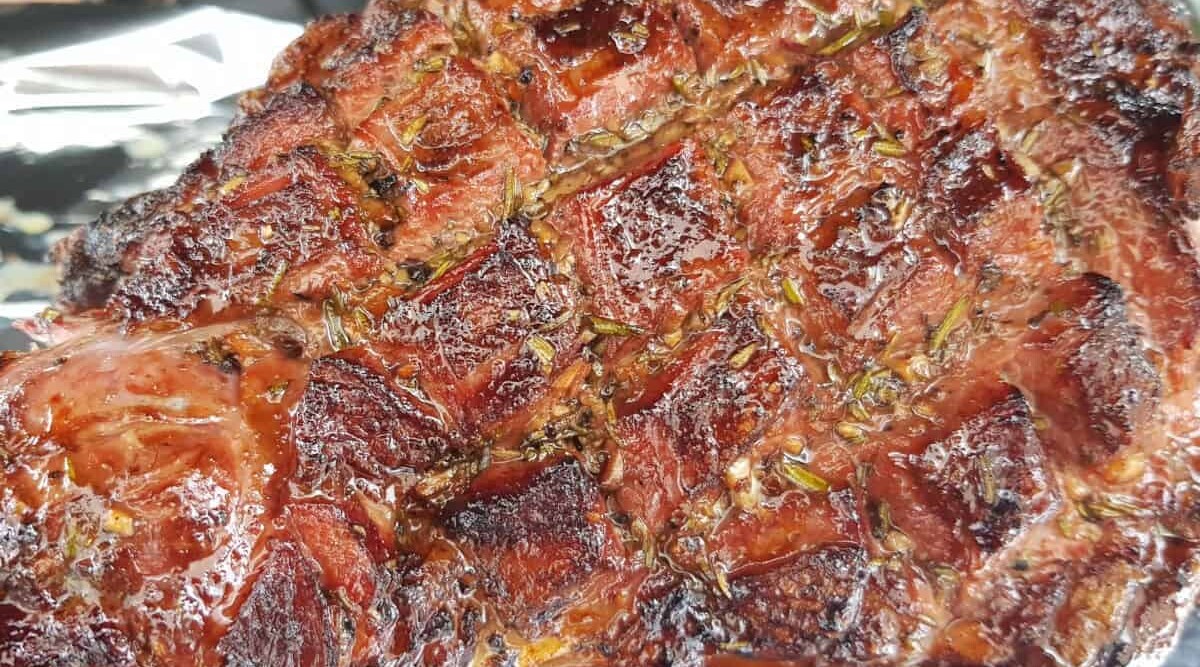
What is the Maillard Reaction? A quick Google search brings up this definition from ‘ScienceOfCooking.com:’
“The Maillard reaction is a chemical reaction between an amino acid and a reducing sugar, usually requiring the addition of heat. Like caramelization, it is a form of non-enzymatic browning.”
In plain English?
The Maillard Reaction is the browning that occurs to food when heat is applied. The crust on a loaf of bread, baked cookies, toasted marshmallow, pan-fried perogies, cooked bacon, and seared steaks are all examples of the Maillard reaction.
Jump to:
The History of the Maillard Reaction
While the Maillard Reaction has obviously been around since the first caveman discovered that in addition to tasting better, meat was much easier to eat when it had first been cooked with heat (in the caveman’s case, fire), the Maillard Reaction has only been documented for the last century.
The scientific principles behind the Maillard Reaction were first documented in the early twentieth century by French Chemist Louis-Camille Maillard who studied the reaction between amino acids and sugars in 1912, before he later joined the French military during the First World War.
Later, an American Chemist John Hodge studied the Maillard Reaction further, publishing a paper in 1953.
How Does The Maillard Reaction Occur?
Best described by Modernist Cuisine, the Maillard Reaction will occur on food that is cooked at a high heat when the food is dry. If the food is wet, it won’t be able to climb above the boiling point of water, stopping the Maillard effect in its track.
When the food is dry, and heat is applied, the structure of sugars and amino acids get rearranged and react chemically to form new compounds, that also reflect light in such a way that it gives the meat a brown color.
The high heat can be traded for a long cooking time as well.
A large piece of meat cooked at 225 °F will not brown in the same period of time as a piece of meat cooked at 375 °F. For argument’s sake, we’ll say 15 minutes. It will brown over a much longer period of time. Again, for argument’s sake, we’ll say 8 hours.
What Does the Maillard Reaction do to Food?
In this video from the American Chemical Society, they discuss the Maillard effect in browned food, how reducing sugars and amino acids in heat are the cause of the reaction, and why it results in greater flavor. Take a watch before we continue discussing things below.
As we’ve already covered, the Maillard Reaction is what gives some foods their brown color when cooked with high heat, but it’s so much more than that!
The important thing is not the change in the color of the food; it is the change in the aroma and taste of the food.
Sure, if you really want to you can boil your steak in water, but do you think it would taste as good? By searing the steak at a high heat, you’re able to give the outside of the meat a browned finish and a great crust that has an excellent texture and taste. That’s why the Maillard Reaction is so important.
Best explained by Meathead at AmazingRibs.com, by adding heat to your food you create a reaction to occur between the proteins and amino acids present. The result is what he refers to as GBD, or Golden Brown and Delicious.
Maillard Reaction vs Caramelization
The Maillard Reaction is different to and should not be confused with caramelization.
Caramelization is merely the browning of sugar. In other words, the heat applied to food that breaks down the natural sugars that are present in some foods, turning them brown and giving them a sweeter flavor.
Onions are a great example of a food that can benefit from both the Maillard Reaction and caramelization. While the browning that occurs is an example of the Maillard Reaction, the sweet flavor that occurs is an example of caramelization.
How to Create The Maillard Reaction
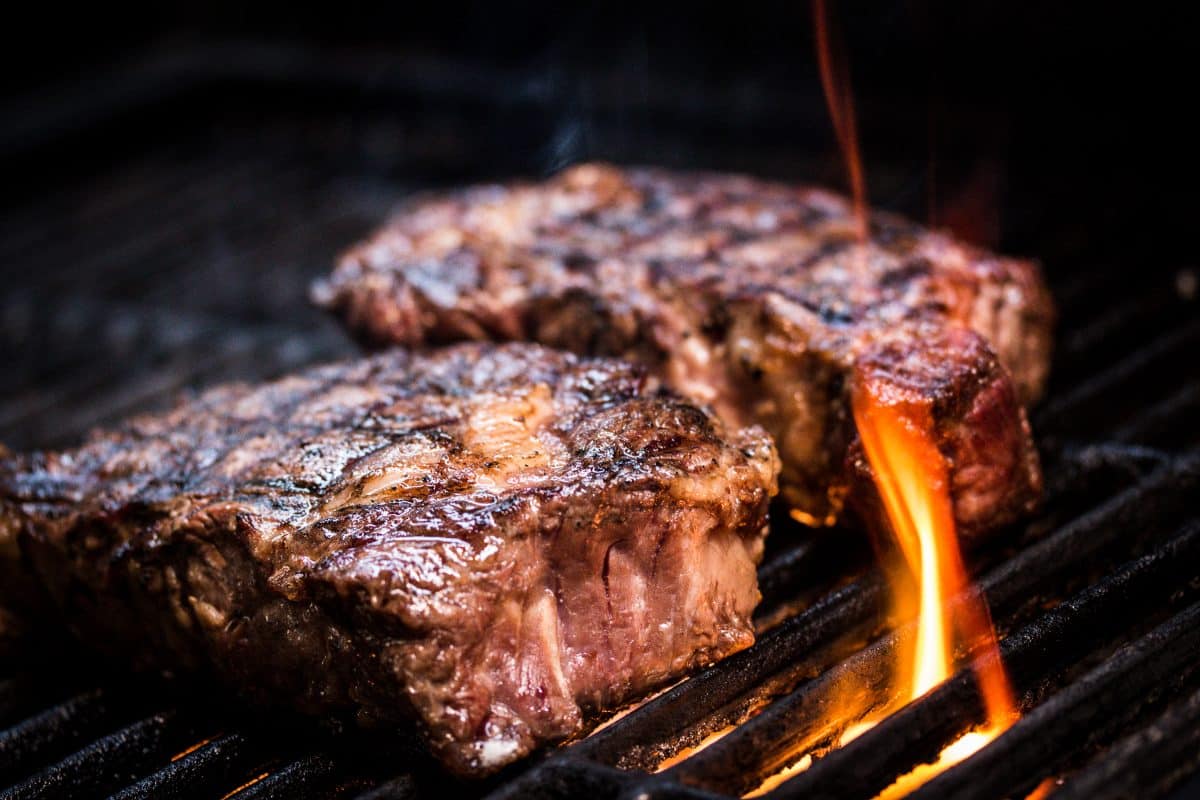
Any cooking method that allows heat to be applied to food will eventually result in the Maillard Reaction. Let’s start with the one we’re most interested in on this site:
Grilling & Barbecue
Cooking food over a direct flame, either on a gas grill or charcoal grill at high enough heat will create the Maillard browning reaction on the cooked foods.
If grilling something like burgers or reverse searing steak over a direct flame (direct heat), the heat from the fire combined with the hot cooking grates will cause the food to quickly brown and develop a rich flavorful crust.
If you are barbecuing a rack of ribs or pork shoulder, you will likely have your meat on the opposite side of the flame (2-zone, indirect heat) at a far lower heat. It will take longer to cook, but eventually, the outside of the meat will brown and develop a crust. Especially if there is sugar in the rub.
Baking
When cookies are baked in an oven, heat is transferred to the raw cookie dough via the metal cookie sheet.
First, the air inside the oven becomes hot, then the hot air brings the temperature in the cookie sheet up. Lastly, the raw dough is heated up by the metal cookie sheet.
The end result will be a cookie with a dark browned bottom where the dough came into contact with the very hot pan.
Frying
Regardless if we are frying in a metal pan or a fat fryer, the Maillard reaction occurs.
When using a metal pan, heat is transferred through the pan and onto the food, causing the food to brown and cook. A great example of this would be cooking French toast.
When using a fat fryer, the oil that’s in the fryer heats up and then the oil will cook the food that’s in the fryer, browning it.
French fries would be a great example of this. If you remove the French fries early, they will not necessarily look brown, but leave the fries in, and they will eventually darken due to the Maillard reaction.
Roasting
If you cook a large piece of meat in a roasting pan in a hot oven, eventually the air inside the oven will cause the exterior of the meat to darken and brown. You can of course also roast on your grill.
It will not necessarily be as extreme as some examples listed here. This is why many recipes call for a roast to be grilled or pan seared either at the beginning or end of the cooking process.
This initial or final sear will help add a delicious texture and flavor to the meat, again due to the Maillard reaction that occurs.
Conclusion
I hope this article has helped you learn a thing or two about one of the most noticeable chemical reactions that are responsible for making our food taste awesome — Browning, and the Maillard reaction.
If you’ve anything to add or have any questions or feedback on this article, please leave a comment in the section below as we love to hear from our readers.
Happy grilling!


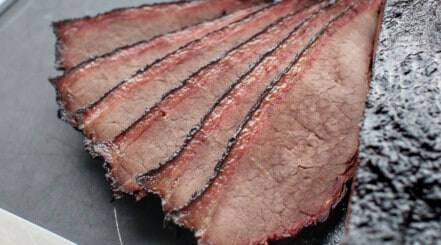
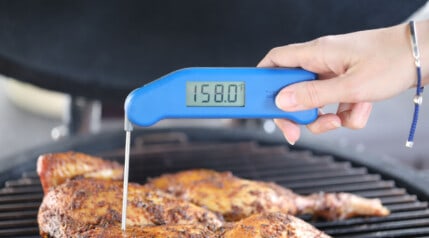

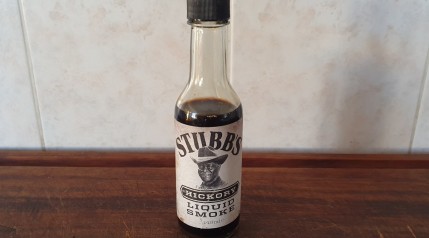
0 Comments